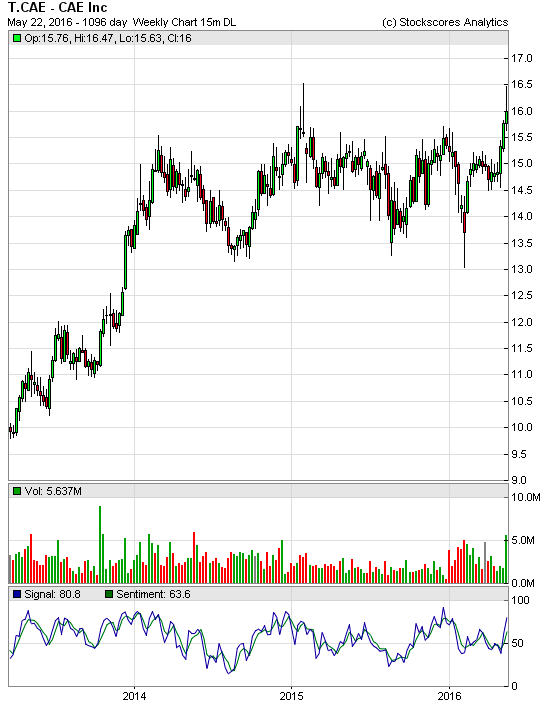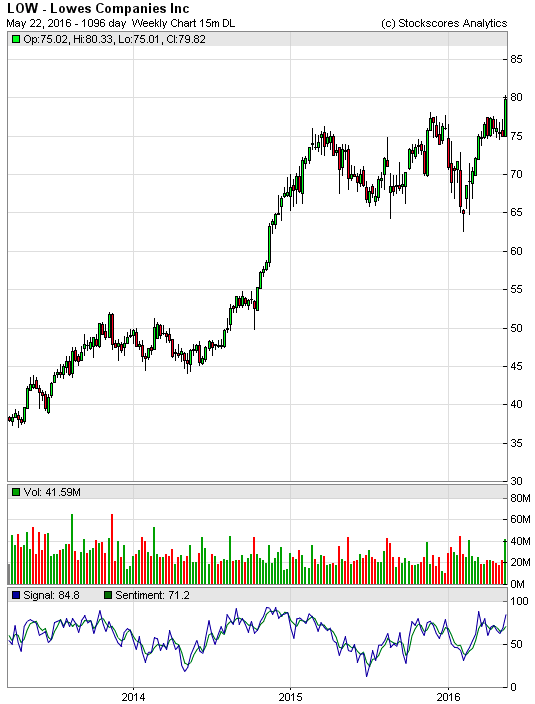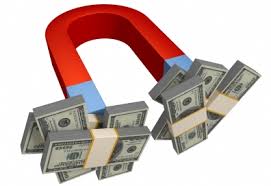Wealth Building Strategies
Tyler highlights seven Ways to Take Emotion Out of Trading plus using his favorite scan for finding long term position trades presents two stocks that look like they can outperform in the months ahead.

![]()
-
In This Week’s Issue:
– Stockscores Webinars – Three this week!
– Stockscores’ Market Minutes Video – How to Trade Reward for Risk
– Stockscores Trader Training – How to Overcome Trading Emotions
– Stock Features of the Week – Stockscores Simple WeeklyWebinar – Saturday’s recording plus three coming this week
I did a webinar this Saturday which focused on three of my trading strategies, I think it is a great way to understand the process and time required to apply my approach.You can watch a video of this webinar on Youtube by clicking here.
Three more webinars this week:
Monday – How to Grow Your Retirement Portfolio
6pm – 7pm PT (9pm – 10pm ET)Thursday – How to Make Stock Trading a Career
6pm – 7pm PT (9pm – 10pm ET)Saturday – How to Get the Most Out of Stockscores.com
11am PT (2:00 pm ET)These webinars are all free, register for them by clicking here.
Stockscores Market Minutes Video – How to Trade Reward for Risk
Can buying a stock at a higher price actually be more profitable? Yes it can, this week I show you how.Click Here to Watch To get instant updates when I upload a new video, subscribe to the Stockscores YouTube ChannelTrader Training – How to Overcome Trading Emotion
I think that many traders have a hard time believing that they can make money by buying a stock and waiting. Most of us are not taught to make our money work for us but instead that we must work for our money. Go to a job, put in the time and you get a pay check. Work hard, your pay checks will grow. But the thought that you can make money by putting your feet up is a difficult thing for most to grasp.With that mental programming, most of us have difficulty holding on to our strong stocks and letting the profits grow. If we buy a stock at $1 and it goes up to $1.20 in a couple of days we are likely to sell. In some ways we think of this fast return as good luck, not much different than buying a winning lottery ticket. We have a fear that someone is going to figure out that we have benefited from a mistake and so we better get out now before we get discovered.
This thinking is strengthened when we own a marginal stock and it goes down as quickly as it went up. If we take a marginal trade we should expect marginal results but somehow we only remember the negative feeling of watching a paper profit turn in to a loss. We tell ourselves that next time we will sell at the first sign of weakness and crystallize the gain. Avoiding pain is human nature.
Our next trade is of higher quality but we sell it on a short term weakness and lock in a quick but relatively small profit. While lost in self-congratulations we realize that someone named Murphy is writing the laws of trading and we watch the stock march ever higher with us eating the stock’s dust. We have jumped off of a high speed bus that is headed for Profit City.
So what is behind this destructive behavior? It is that deep routed emotional response to danger that keeps us out of trouble but also makes us avoid a greater feeling of fulfillment.
Fear is what makes us sell our winners too early and hold our losers too long.
The best traders are not afraid of holding on to strong stocks, they are afraid of holding on to losing stocks. What do you do?
If you are a normal human being, you do the opposite. Think about the last loser that you owned. As the stock fell lower and lower, what was it that you told yourself over and over?
“It will bounce back eventually, I will just be patient.”
What your subconscious mind was really saying was, “It is much too painful to sell this loser and see that loss of my hard earned capital. I will hold on with the hope that it goes back to what I paid for it and then I will sell.” And of course, it continued lower because there was something wrong with the company and it deserved to go lower.
So what can be done to fight our destructive minds? How can we program ourselves to hold on to our winners and dump the losers? How can we trade without fear?
Here are my Seven Ways to Take Emotion Out of Trading:
Trade Quality
Our fears are confirmed when we enter marginal trades. If you only trade the best opportunities you will trade less but you will have greater success. This will put you on the road to fearless trading and help you to simplify the trading approach. Write down your rules and do nothing if every rule is not satisfied. When you consider a stock, look for a reason to avoid the trade. If you can’t find one then you have a trade worth taking.Buy With Confidence
The rules that you trade with have to have a foundation of success. You have to believe in your rules or you won’t believe in holding the stock through the shakeout periods in the longer term up trend. Analyze and test the strategy until you have proven to yourself that it works. Then trade it slowly without a lot of risk so you can gain a greater level of confidence that it works.Don’t Watch the Scoreboard
Sports fans don’t spend a lot of time watching the scoreboard during a game, it only matters when the game is over. In trading, the scoreboard is the profit and loss figure for your account. If you focus on the scoreboard it is likely that you will lose sight of what is happening in the game. As a technical trader, all that matters to me is what the chart is telling me.Plan Your Losses
Before you enter a trade, figure out what needs to happen for you to consider the trade a loser. For me, that is a move through chart support; I plan to exit the trade when the stock goes through a psychological floor price on the chart. Understanding where that point requires some experience and knowledge but once you know how to identify support on the chart, plan your losses.Plan the Trade
I find it helpful to predict pull backs. My rational side knows that stocks cannot go straight up and that they must suffer pullbacks to recharge buyer interest and shake out weak holders. My emotional side feels fear when those pull backs happen. If I plan my trade and build in expectations for the counter trend pull backs I can deal with them better and have a greater chance of not succumbing to the fear when they do.Don’t Fall in Love
I don’t want to know too much about what a company is doing because I have found that the more I like a stock the more likely I am to not listen to the message of the market. There is a lot of bias in the information that we receive about companies and what they are doing. The ultimate arbiter of truth is the market itself; we should have a greater faith in the opinions of thousands of market participants than a few biased sources of information.Tolerate Risk
Without risk, there is no potential for return. To avoid trading with fear we have to be comfortable with the risk. If not, we will let fear guide our decisions and those decisions will probably be wrong. Therefore, do not take more risk on a trade than you are comfortable losing. Plan your losses based on how much you are willing to lose and let that determine the size of your positions.The Profit is in the Patience
When a trade is working, let it work for you. A business owner does not fire her best employee. A hockey coach does not send his best player to the minor leagues. A company does not stop making their best products. Hang on to your best stocks with the same attitude. Hold the stock until there is a rational reason to exit the trade rather than selling because it feels good. If you are taking quality trades and trading without fear, you will feel better over the long run.The time to get started on your reprogramming is now. Don’t expect to break habits built up over a life time in a couple of days. The battle against your fears is one that takes time win but with determination you can do it.
This week, I ran the Stockscores Simple Weekly market scan for both the US and Canada. This is my favorite scan for finding long term position trades. Here are two names that look like they can outperform in the months ahead.
1. T.CAE
T.CAE has been trending sideways under $15.50 resistance since 2014 but is now breaking out of that range with strong volume this week. Support at $14.50.

2. LOW
LOW is breaking out of a cup and handle pattern on the daily and has a strong weekly chart with support at $75. Historical yield is 1.42%

related from Tyler Bolhorn:10 Key Thoughts To Remember Now
References
- Get the Stockscore on any of over 20,000 North American stocks.
- Background on the theories used by Stockscores.
- Strategies that can help you find new opportunities.
- Scan the market using extensive filter criteria.
- Build a portfolio of stocks and view a slide show of their charts.
- See which sectors are leading the market, and their components.
Disclaimer
This is not an investment advisory, and should not be used to make investment decisions. Information in Stockscores Perspectives is often opinionated and should be considered for information purposes only. No stock exchange anywhere has approved or disapproved of the information contained herein. There is no express or implied solicitation to buy or sell securities. The writers and editors of Perspectives may have positions in the stocks discussed above and may trade in the stocks mentioned. Don’t consider buying or selling any stock without conducting your own due diligenc

 On the Offense for Opportunity
On the Offense for Opportunity
 “How many millionaires do you know who have become wealthy by investing in savings accounts? I rest my case.”
“How many millionaires do you know who have become wealthy by investing in savings accounts? I rest my case.”
– Robert G. Allen
Have you heard of “The Tale of the Wheat and Chessboard?”. It is based on a story about the invention of the game of chess. The story goes that the inventor showed the chessboard to his king, who was so impressed that he asked the inventor to name his own reward for the accomplishment. The inventor, who understood compounding, only asked that he be given a single grain of wheat for the first square, double on the second square and so on for the balance of the board, which the King quickly agreed. The king sent his treasurer away to get the grain for the inventor and after he had been gone for a week, became worried. He called for him to ask what had happened, and was told that, through the power of compounding, the King owed 18,446,744,073,709,551,615 grains of wheat! The King had gotten a quick lesson in finance and the power of compounding.
The exponential effect of compounding is quite extraordinary, as the above example illustrates. You don’t have to have a math degree to see how the effects of compounding can work to your advantage, particularly if you are early in your life and career and you maintain a disciplined, structured approach to monthly savings and investment.
For instance, according to a recent CNBC article, a 25-year-old person who makes $40,000 per year and contributes 10 percent of his or her salary to an investment plan annually will amass $3.9 million by the time he retires at age 67. That figure assumes a 50 percent employer contribution match, a 5 percent estimated salary increase rate annually and an 8 percent investment rate of return. Using all the same parameters, that same person would have $2.5 million—or $1.4 million less—if he had started saving only 5 years later at age 30. Due to the power of compounding, a five-year head start results in a significant difference in the total.
When we were children, on the first snowfall we would rush outside to build a snowman. Starting with a handful of snow, we would start rolling the small snowball in the snow until it got so large we could barely push it. This is like compounding returns; the effort is at the start, the reward is in the perseverance over time.
My wife and I put three kids through university by starting a college fund the month they were born, and contributing only $100 per month into a blue chip, dividend producing stock portfolio. The accumulated effect of the monthly contribution, stock price increase and reinvested dividends paid for college tuition 20 years later.
Here’s how to set yourself up to take advantage of the power of compounding:
Start early: as soon as you have even a modest income, and preferably in your teenage or early adult years. If you are a parent, encourage good investing habits in your children by setting up an investment account (such as an Intrust Account) or buying shares in a company that produces dividends.
Once you start a working career, start immediately investing 10% of your net earnings into solid, blue chip, dividend producing stocks. Make sure you select to reinvest the dividends. Live off the balance and never, ever touch the principal.
Be patient and hang in for the long-haul. Stock markets will go through long term trends and short term periods of intense volatility. This is normal. Resist the temptation to liquidate during a period of significant market meltdown, such as in 2008. Think long-term, as in decades, not years.
Be careful with mutual funds, particularly those with annual fees great than 1%. While the fee may seem small initially, it will eat significantly into your return and be expensive over the long run. Investigate good quality index funds or ETF (Exchange Traded Fund) as an alternative, or build your own portfolio.
Albert Einstein famously stated, “Compounding Interest is the 8th wonder of the world. He who understands it earns it. He who doesn’t pays it.”
If it’s good enough for Einstein, it should be good enough for you.
Eamonn
related: Eamon Percy on “Want To Get Rich? Go Where The Money Is“
(Note: The information in this article is general advice only and is not intended to be specific financial or investment advice. Before acting on any advice, please contact an approapriate financial advisor or investment professional).

“Nearly all men can stand adversity, but if you want to test a man’s character, give him power.” – Abraham Lincoln
 The biggest leadership challenges I ever faced in my career invariably ended up within me. While the initial problems may have been external, the battle to solve the problem was fought in both my mind and heart. This internal struggle by a leader to know, do, and be the right thing, at the right time, becomes the true test of character.
The biggest leadership challenges I ever faced in my career invariably ended up within me. While the initial problems may have been external, the battle to solve the problem was fought in both my mind and heart. This internal struggle by a leader to know, do, and be the right thing, at the right time, becomes the true test of character.
Leadership trouble erupts when the external problems overwhelm the internal abilities and emotions, usually as a result of insufficiently developed good leadership habits and self-disciplines. While literally any dummy can be a good leader during great times by maintaining the status quo, true leadership is tested during times of tremendous stress, strife, change and conflict. Just like a top athlete who is paid to perform for the entire season, the athlete earns his or her pay in the critical moments of a championship game. This game-ready leadership state starts with developing and then maintaining tremendous levels of self-discipline compounded by systems that do not fail while under stress.
I first noticed this in the corporate world, while starting my career in a 1,400 person high-volume, advanced electronics manufacturing facility, which was an incredibly fast-paced and stressful environment. Some of our skilled, long-term production supervisors could withstand almost any chaos that came their way (fires, fights, equipment breakdowns, etc.) with inner calm, the new supervisors (myself included) had not developed that inner fortitude.
Over the years and through subsequent executive roles, I realized that I needed to develop myself to a high level of self-discipline and good habits, in order to exude confidence and calm to others for whom I had the responsibility of leading.
This has been a lifelong project, and today, I want with you to share the three most important principles that helped me develop self-leadership.
Self-leadership Principle #1: Make self-discipline a priority
The world has a way of giving you a heaping dose of discipline, one way or another. Either you are disciplined by the world (i.e. You’re fired! or Whoops, we lost your money! or You’re next in line for promotion, I promise!) or you discipline your own world, on your schedule, and your terms. I prefer the latter not the former. Deciding to actually develop internal leadership skills, such as character, emotional control and developing a Positive Mental Attitude, is the first and most import step.
Self-leadership Principle #2: Build a success system that works
Building good self-leadership is a long process, and requires a system that constantly builds, reinforces and corrects the right types of behaviors, while mitigating or eliminating the harmful behaviors. About 20 years ago, I wrote down the types of behaviors I wanted to develop into a brief series of statements I call Percy’s Creed. Each morning I read through the Creed and ask myself how well I did on living the principle the previous day, and check the ones on which I did well and mark down the ones I didn’t. Not only does this provide a daily reminder of what is most important, it also enable me to self-correct and make regular, daily improvement. My creed is posted here for your information. Feel free to share it.
Self-leadership Principle #3: Focus on continuous improvement
It’s been said that if you are not moving forward, you are moving backwards. I agree. In fact, I have embraced the concept of Continuous Improvement as one of my most important career builder and life principles. We sometimes make it too difficult to achieve a goal by focusing purely on its attainment, rather than on the progress we are making towards attaining it. Like progressive resistance while weight training, the progress attainment towards the goal makes us stronger, better and more resilient as we strive to achieve what is most important in our lives.
more from Eamon Percy: Six Steps To Building A Great Team

So, how can ordinary investors apply the academic evidence – the lessons learned from more than a hundred years of rigorous research? How can they apply that to achieving their financial goals?
Well, this might sound dramatic, but the work of Louis Bachelier, and of Nobel Prize-winners like Samuelson, Sharpe and Fama, should make us question almost everything we thought we knew about investing; and almost everything the financial industry and the media tell us we should be doing. Let’s watch….
“If you are serious about investing and building wealth the video documentary series ‘How To Win The Losers Game” is a must see. It’s excellent.
After watching the video if you want to learn more about better low-cost, long-term, low-maintenance, diversified investment strategies, download our free guide “12 Essential Ideas For Building Wealth” by clicking on the banner at the top of this page.
Paul Philip, Financial Wealth Builders Securities














